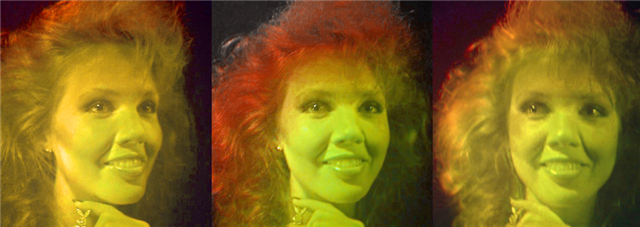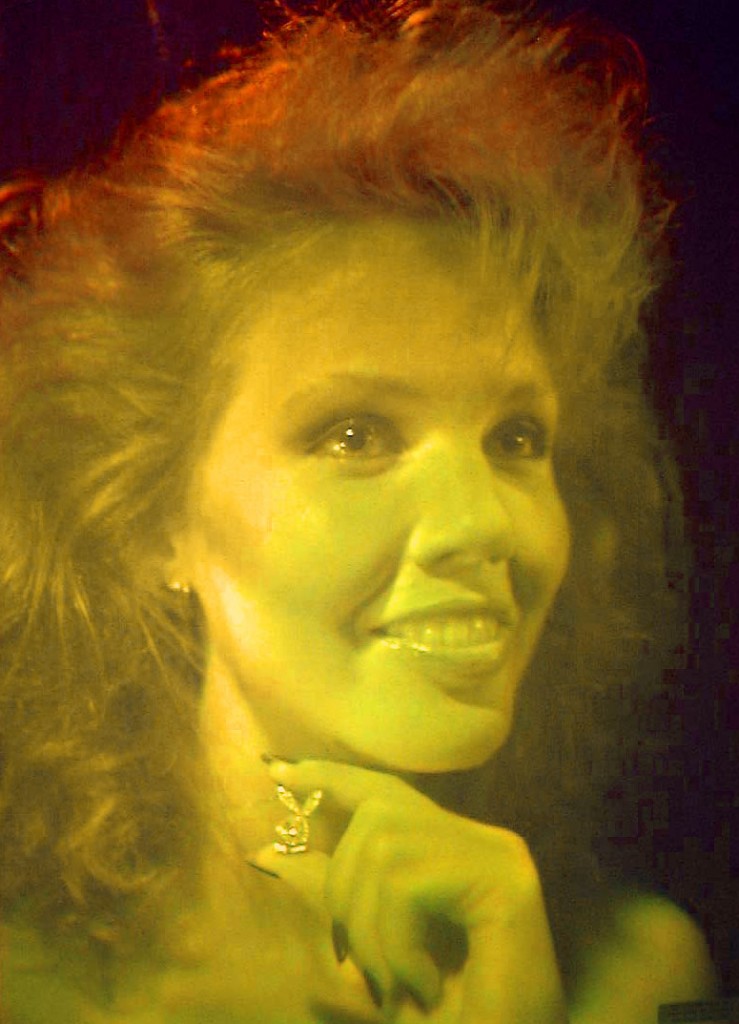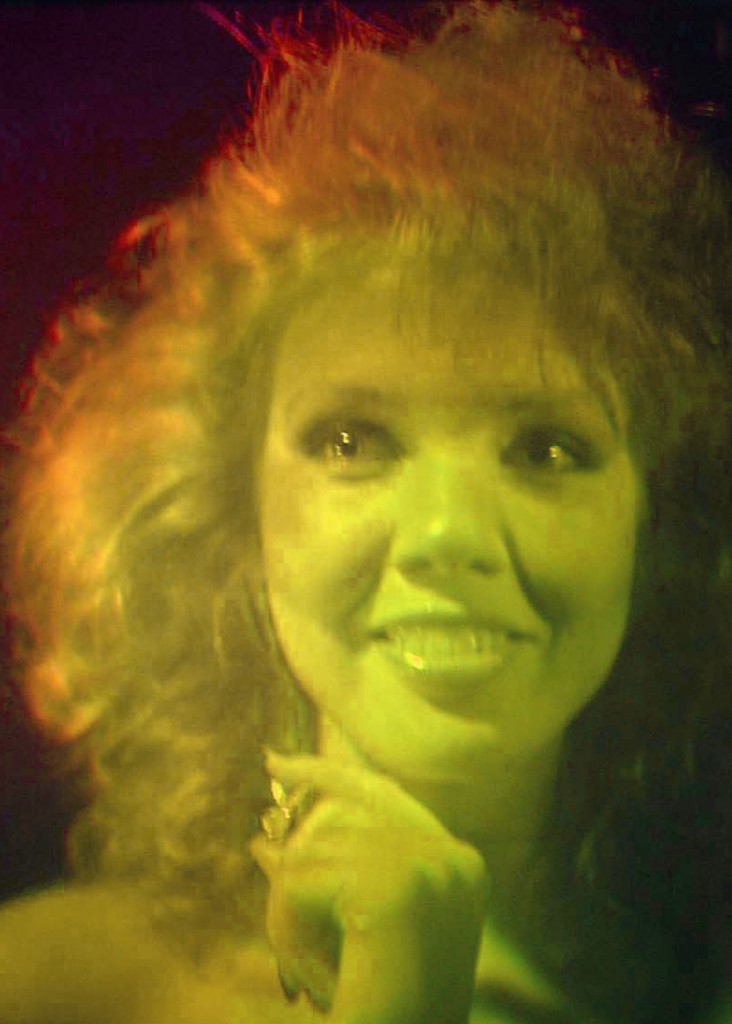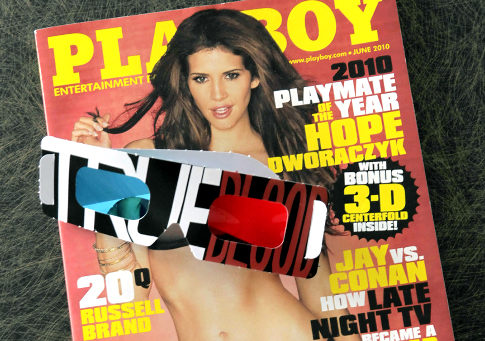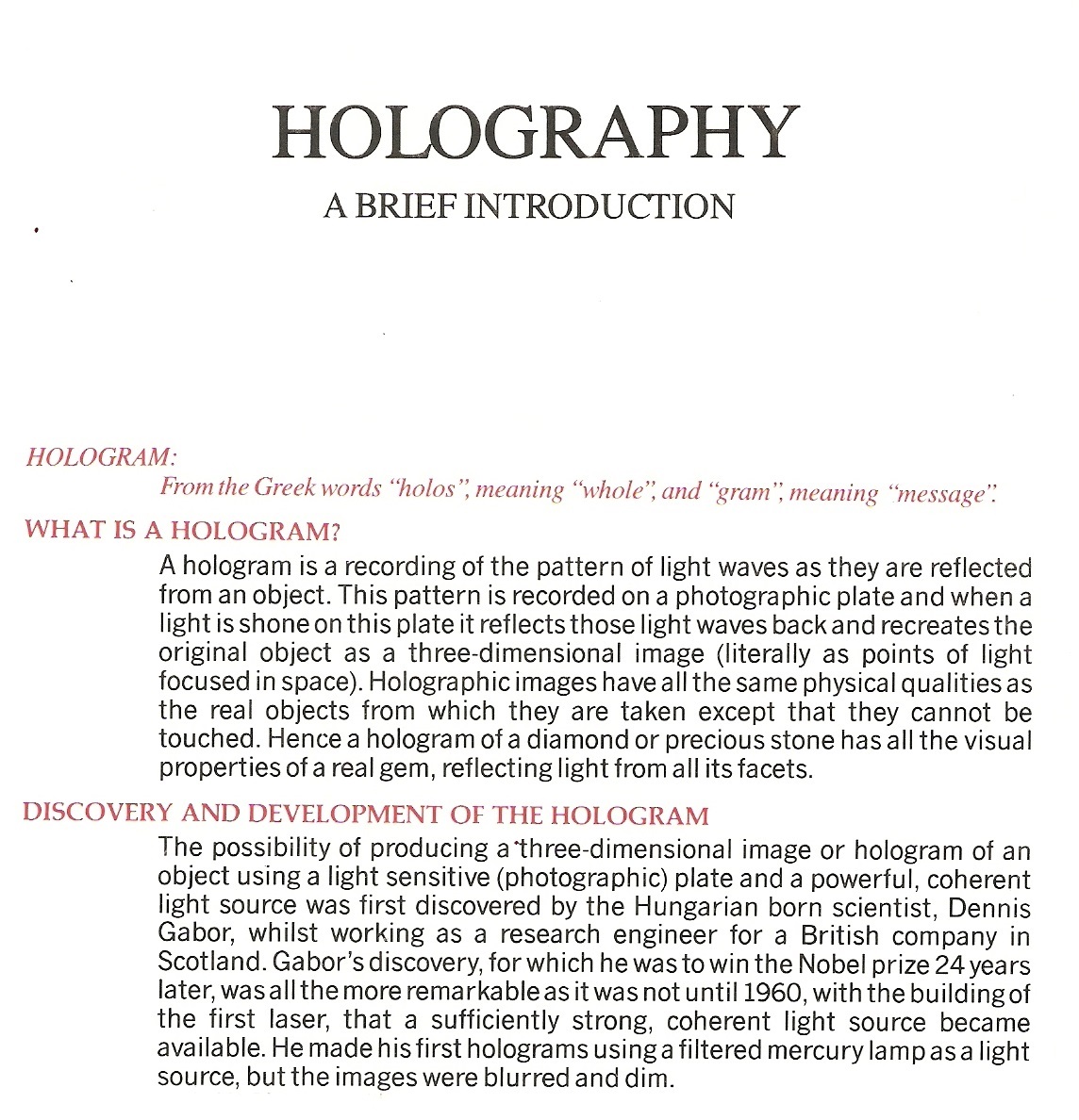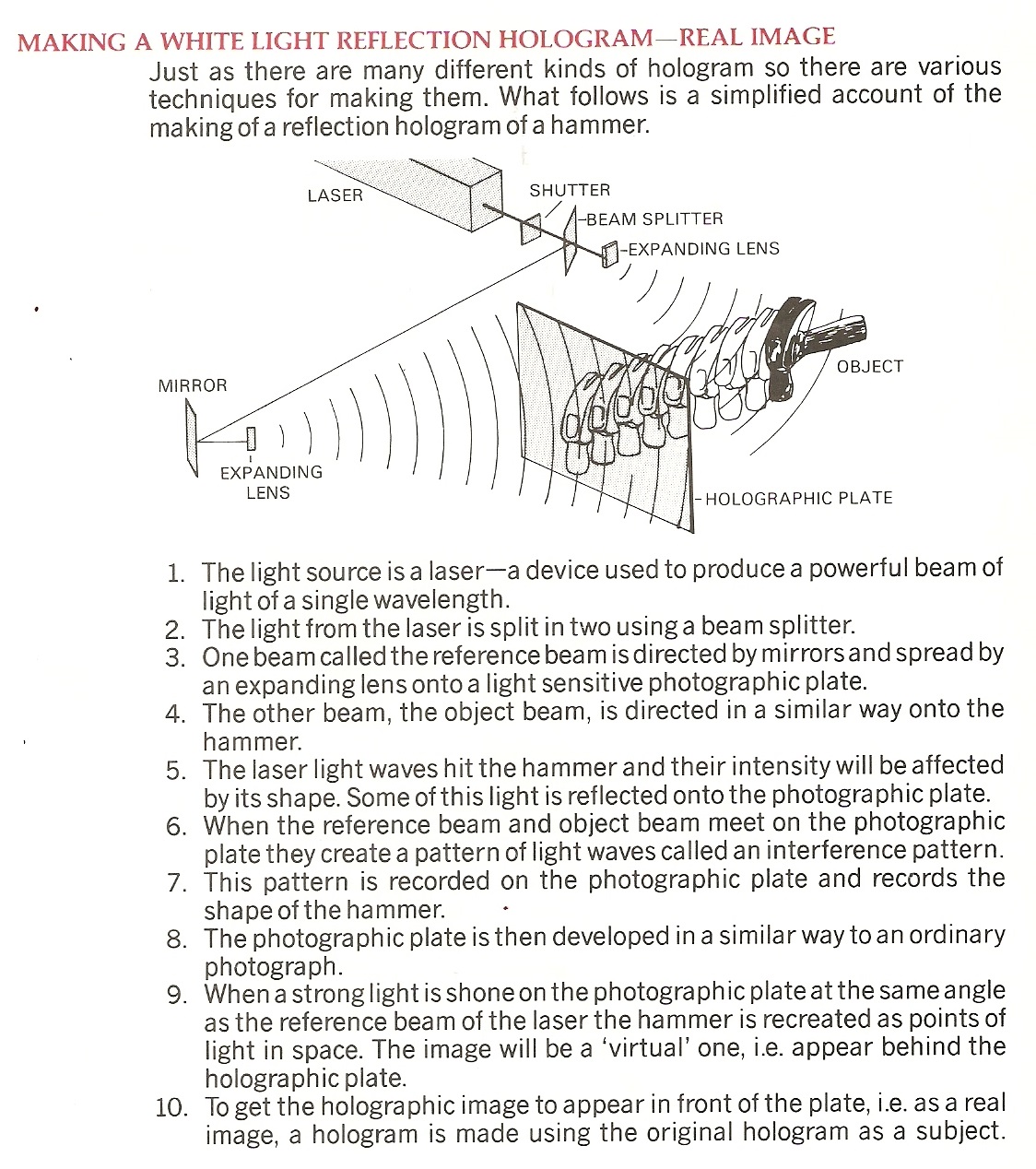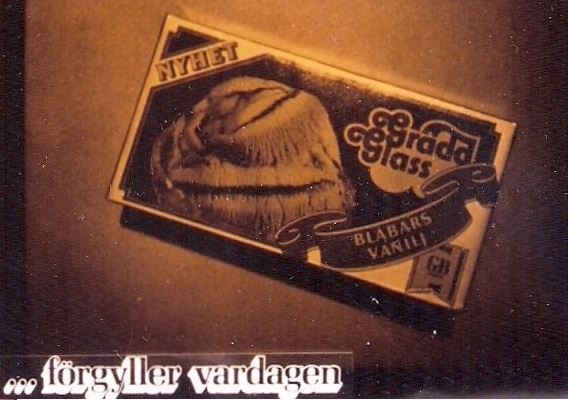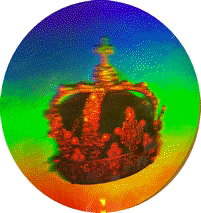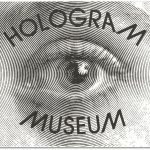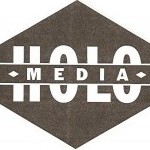Playboy Hologram Portrait Donna
Playboy Hologram Portrait, Laser Portrait
Playboy Hologram Portrait of Donna Edmundson, Playmate of the Year 1987 Playboy. Hugh Hefner ordered some hologram portraits of Donna with a technique developed by Swedish scientists. The first white light Hologram Portraits in the World
3 pictures in one – Donna Edmundson
The Playboy hologram was produced with a pulsed laser and is today a collector piece on glass 32×43 cm, with a metal frame in gold 50×60 cm, 15.000SEK. Unframed 10.000SEK. Including VAT, excluding transport cost. ONLY 2 holograms available.
The photo of the hologram doesn´t show correct colours. The portrait is very realistic with a depth of some 20 cm where Donnas hair and hand, are sticking out of the holographic plate.
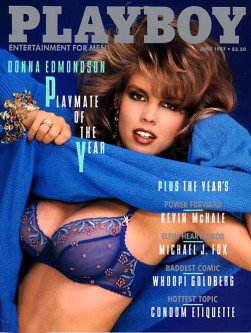
Donna Edmondson had obtained her real estate license right before becoming a Playmate. Her high school yearbook named her Most Likely to Become a Bunny. Played first base on her high school softball team. Born 1966 in North Carolina where she still lives with husband and 3 children. Photo Richard Fegley, Stephen Wayd
Playboy have not only used the lasertechnique holography for some hologram portraits but have also used stereoscopic technique. Using glasses with red and blue colours the brain fooles you that it´s 3D, though it´s 2D, stereo!
Click here to read a mini biography Donna Edmundson Hologram
Holography A Brief Introduction
Holography – A Brief Introduction
Holography – A Brief Introduction, copywrite AH Prismatic Ltd, founder Barc Thompson. A pioneer company established in Brighton England 1982 whom HoloMedia AB & Hologram Museum/Gallery represented in Sweden for many years as a retailer and whole seller of holographic gifts and hologram pictures, new at the Scandinavian market.
Hologram: From the Greek words “holos”, meaning “whole”, and “gram”, meaning “messige”.
Watch out there is a trap at internet! 70 % of hologram at internet is not hologram – NO LASER, NO HOLOGRAM!
Copywrite AH Prismatic Ltd, Barc Thompson
(Use only LED light to protect the hologram film from heat which old spotlights generates)
GB glass Hologramtavlor med DN:s framkallningsvätska
Hologram – GB glass – vanilj & blåbärsvanilj
Världens första serie på 1.000 reflektionshologram på glas togs fram 1979. GB´s marknadschef Jan Åhlin besökte Sveriges första reklammässa, Nordisk Reklammarknad, Sollentuna, där en av initiativtagarna var Picko Troberg. Vi hade precis kommit igång att marknadsföra den nobelprisbelönade lasertekniken och GB´s hologrambeställning blev en milstolpe för Lasergruppen Holovision AB med delägare Dagens Nyheter och marknadsförare Mona Forsberg. Responsen från Press/Mediabranschen var dessutom överväldigande.
Glasspaketet ser ut att ligga någon decimeter innanför ett fönster. Fotografiet av laserbilden påverkas av fototeknikens begränsning. Transparent text mellan skyddsglas och hologramplåt accentuerar djupet i hologrammet. Glasspaketets sidor syns när man rör på hologrammet eller passerar förbi tavlan.
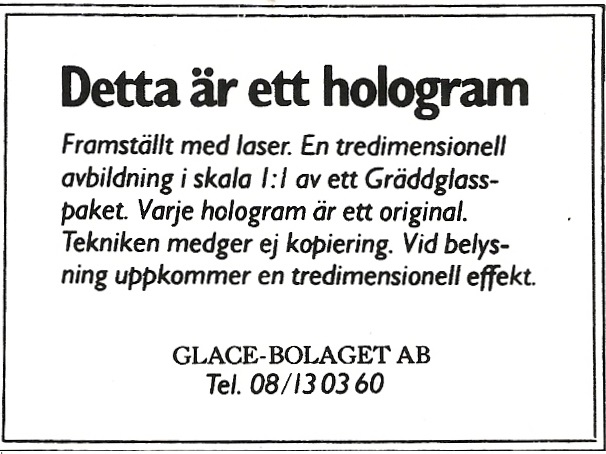
Belysningsinformation och monteringsinstruktion med stöldkrok bifogades för att exponeras i 1.000 butiker.
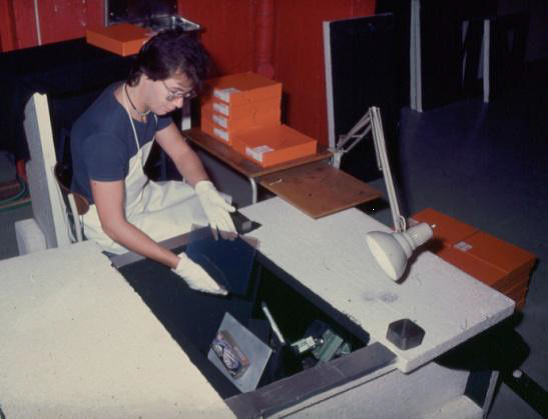
GB glasspaket uppställt på stabilt golv (vibrationsfritt) i laboratoriet på Östhammarsgatan Stockholm. Frigolitskivorna till för att skydda mot luftcirkulation. Exponering av laserljus med optik dolt under frigoliten. Lennart Svensson exponerar ett hologram (glasplåt) i taget med hjälp av Per Skande och Hans Bjelkhagen.
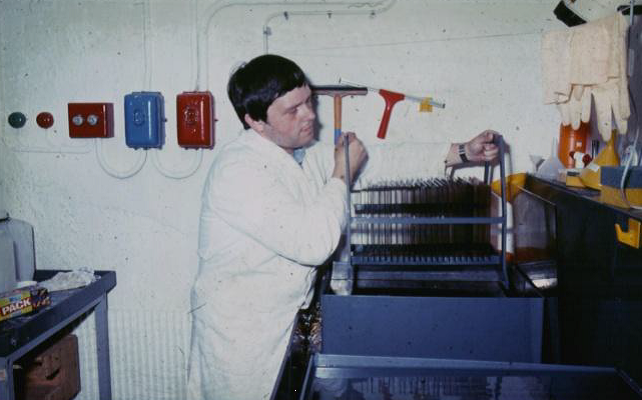
Hans Bjelkhagen sköljer här glasplåtarna som fixerats efter exponering av laserljuset.
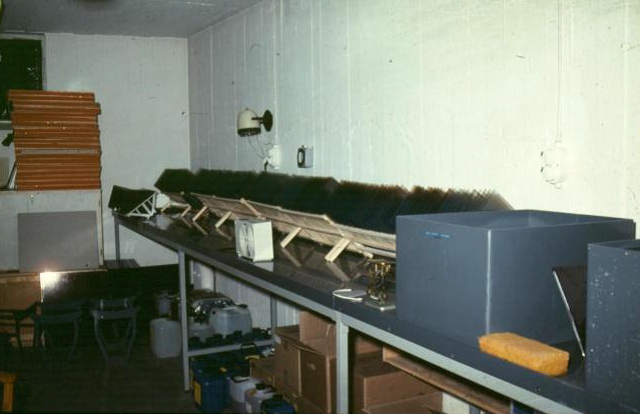
Glashologram på tork. Då arbetade man i huvudsak med fotografiskt material från Agfa Gevaert. Egen framkallningsvätska utvecklad av Lasergruppen Holovisions delägare Dagens Nyheters filmframkallare Sverre Calmbrant. Den egna kemikalien ledde till att svenska hologram uppmärksammades runt om i världen. Många holografi företag ville köpa Sverres framkallningsvätska, och några hade tur att få tillgång till “konkurrensmedlet”.
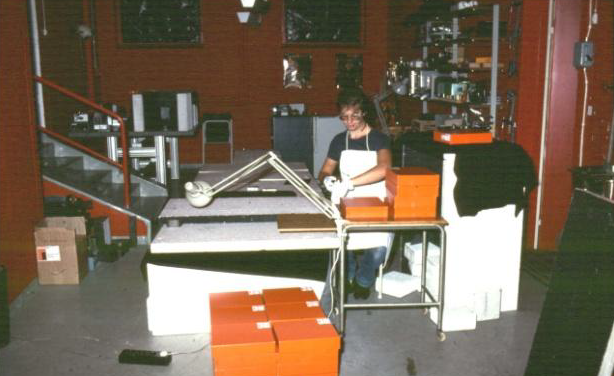
Lennart Svensson packar hologramtavlor till tusen!
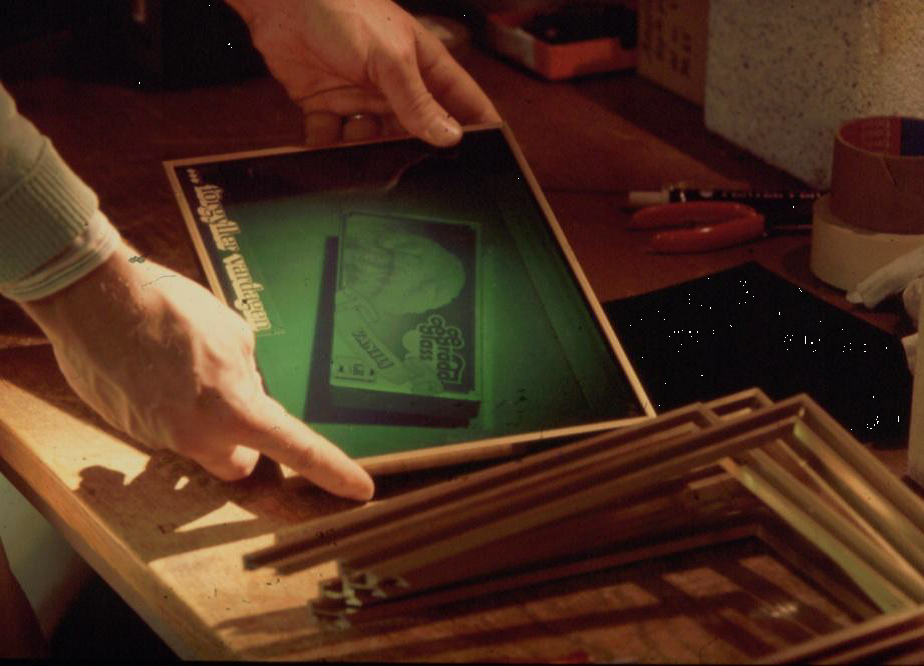
Alla hjälptes åt att rama in GB hologrammen i 20×25 cm metallram i guld specialbeställda hos Metallramar Sveavägen i Stockholm. Här Per Skande med någon av tusen hologramplåtar.
Historic holograms from Mc Donnell Douglas´ will be exposed at the new Hologram Museum in Sweden.
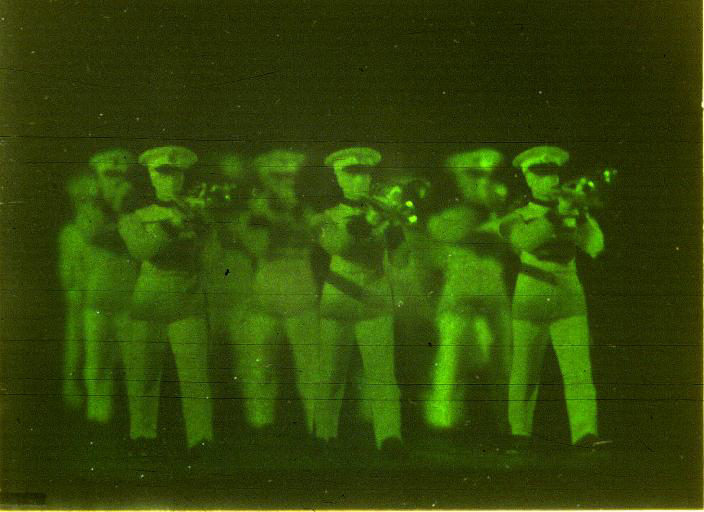
Marching Band 1970 Image-plane reflection hologram, silver halide emulsion on film, size 4×5″ (10×12,5 cm)
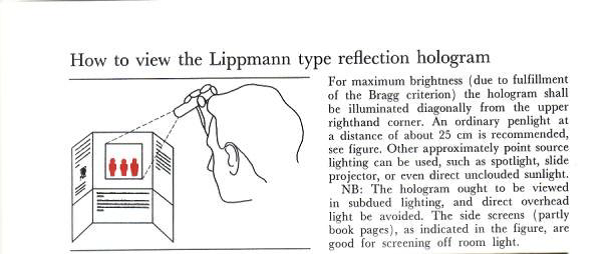
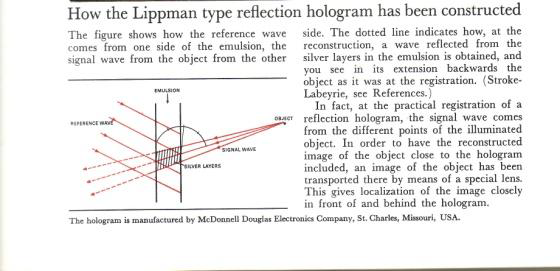
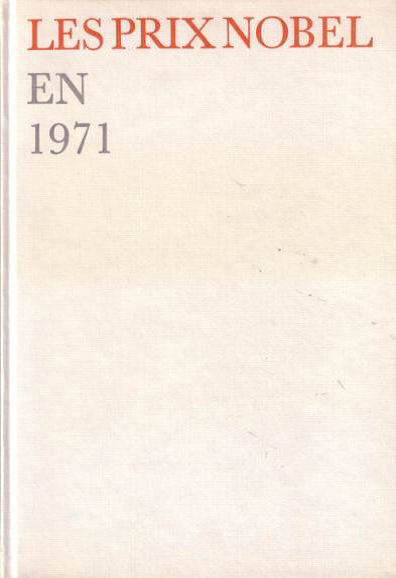
A very early massproduced reflection hologram was the Marching Band hologram, silver-halide Agfa film produced by McDonnell Douglas in 1970. It was included in two books, Le Prix Nobel 1971 (P.A. Norstedt & Söner, Stockholm 1972) and the Kosmos 49:1972 (Almqvist & Wiksell, Stockholm 1972). It was also used in McDonnell Douglas´ own promotional materials with their holograms.
Reference Dr. Professor of Holography, Hans Bjelkhagen (text and pictures)
Historic holograms – produced with the Nobelprized lasertechnique holography – will of course become an important part of all types of holograms at the NEW HOLOGRAM MUSEUM in Sweden.
Do you want to become a part of that project?
Colour holograms – Ultra realistic pictures in 3D
Which is the object and which is the hologram?
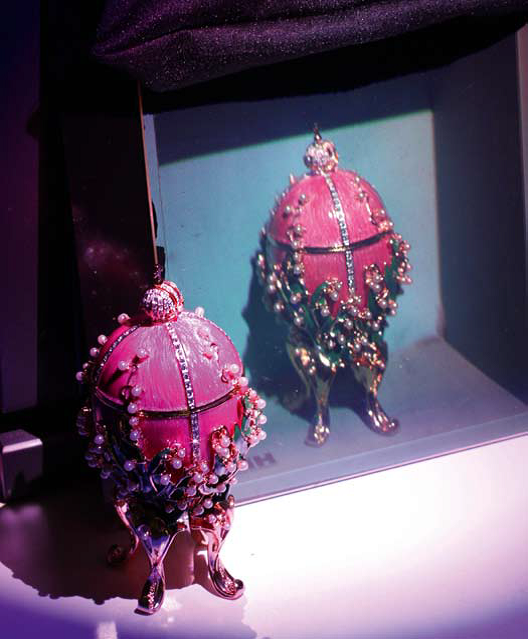
This hologram represents the most realistic-looking 3D image of an object that can be recorded today. The extensive field of view adds to the illusion of beholding a real object, rather than portraying a mere image. Because of the extremely high image resolution, these images cannot be transmitted and dislayed on any electronic display device.
Such an image has been named by the Hellenius Institute of Holography, an OptoClone TM.
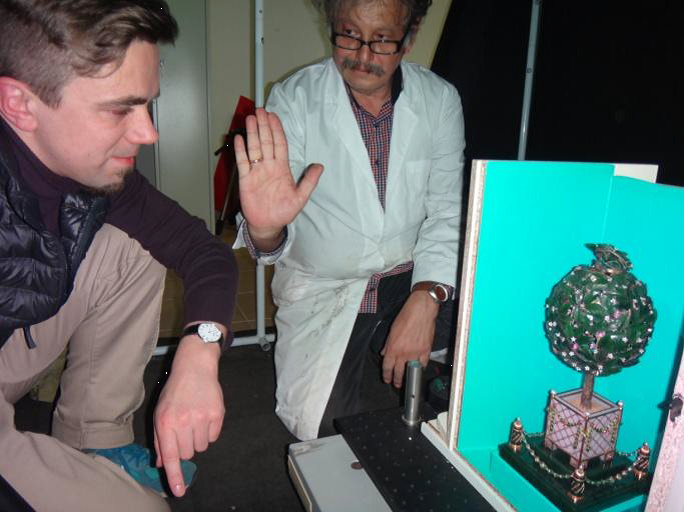
The Bay Tree Egg Faberge Hologram Opto Clone HIH Hellenic Institute of Holography
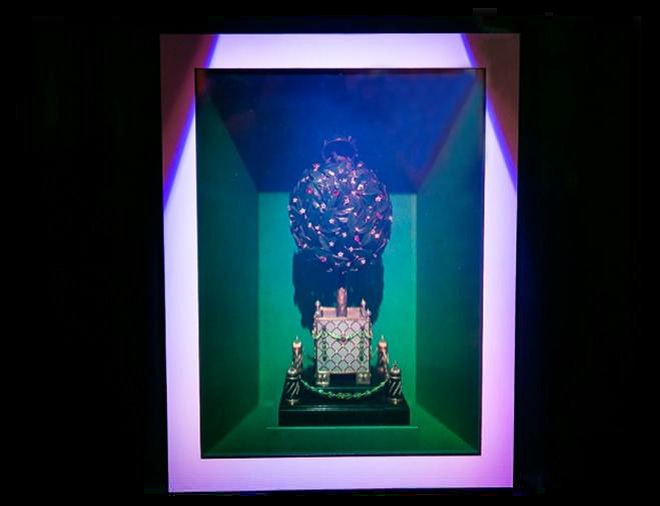
The Bay Tree Faberge Museum Hologram Opto Clone HIH Hellenic Institute of Holography
An Ultra-Realistic Image has the following characteristics:
* no detectable image blur
* no field of view limitations
* same scale – no magnification
* resolution corresponds to the eye resolution
* image light reflections move as they do on the object
* it looks identical to the real object observed by the eye
* a full-parallax 3D image with very accurate colour rendition
In principle – recording light waves reflected off an object, stored and recreated later on.
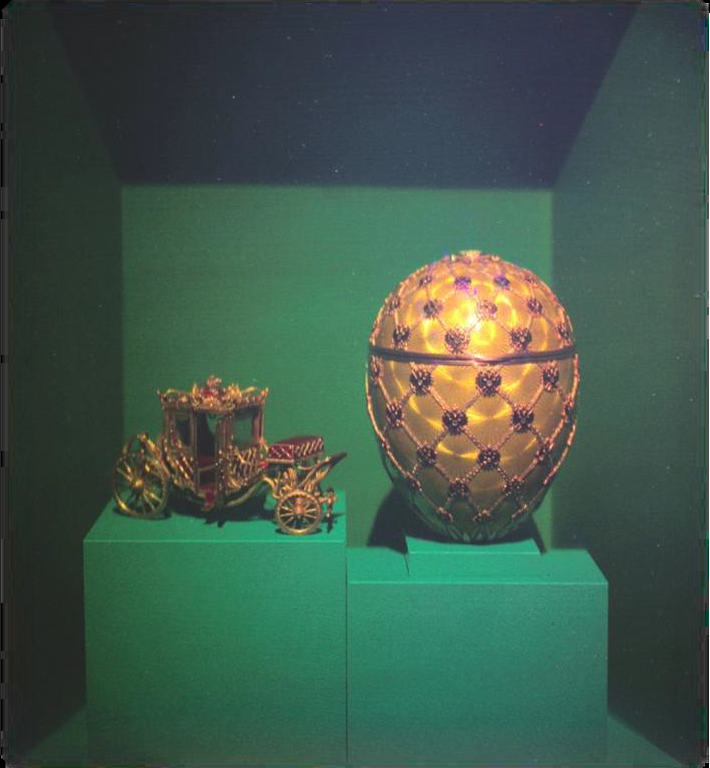
The 1897 Coronation Easter Egg Hologram Opto Clone HIH Hellenic Institute of Holography
The possibility to record an OptoCloneTM is actually based on the interferential imaging sciences, Lippmann photography and holography, which means that information is stored as an interference structure in a recording medium. The panchromatic recording medium is a silver-halide emulsion coated on glass which contains nano-size light sensitive silver-halide crystals.
References; Hans Bjelkhagen, Alkiviadis Lembessis, Andreas Sarakinos

